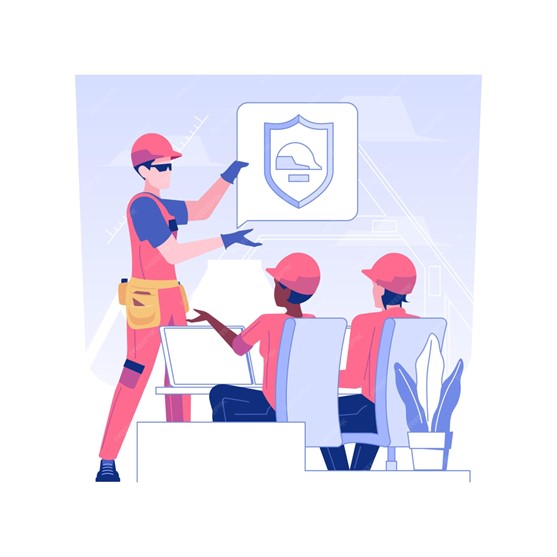Workplace safety and conduct training is an integral part of creating a positive and productive work environment. In Australia, there has been a growing recognition of the importance of addressing internal workplace sexual harassment. It is crucial to provide employees with the knowledge and skills to prevent and respond to such incidents. However, traditional approaches to training, often characterized by the “tick and flick safety” training mentality, have proven to be ineffective internal workplace safety training in creating lasting change.
The importance of addressing internal workplace sexual harassment
Internal workplace sexual harassment can have severe consequences for both individuals and organizations. It can lead to decreased employee morale, increased turnover, and damage to the company’s reputation. Furthermore, it is a violation of human rights and can have a significant impact on the mental and emotional well-being of victims. By addressing internal workplace sexual harassment proactively, organizations can create a safe and inclusive environment where everyone can thrive.
Pros and cons of internal workplace sexual harassment training
Internal workplace sexual harassment training has its advantages and disadvantages. One of the main benefits is that it allows organizations to tailor the training to their specific needs and culture. It also provides an opportunity for employees to learn from real-life examples and experiences within the organization. However, internal training programs may lack the expertise and objectivity required to effectively address sensitive issues such as sexual harassment. Additionally, employees may be hesitant to speak openly about their experiences in a training session led by their peers or superiors.
The tick and flick approach to internal training
The “tick and flick” approach to internal workplace sexual harassment training refers to a superficial and checkbox-style approach. It often involves employees simply signing off on a training module without fully engaging with the content or reflecting on their behavior. This approach fails to create meaningful change and can perpetuate a culture of indifference towards sexual harassment. It is essential to move away from this approach and adopt more effective training methods.
The limitations of internal workplace sexual harassment training
While internal workplace sexual harassment training has its merits, it also has limitations. One significant limitation is the potential for bias and conflicts of interest within the organization. Employees may be hesitant to report incidents or seek support if they feel that their concerns will not be taken seriously or may lead to negative repercussions. Moreover, internal training may not effectively address power imbalances and systemic issues that contribute to sexual harassment.
The impact of ineffective training on workplace culture
Ineffective internal workplace sexual harassment training can have a detrimental impact on workplace culture Sydney, Melbourne, Brisbane, Perth, Adelaide and across Australia. When employees feel that the training is merely a formality and not taken seriously by the organization, they may become disillusioned and less likely to report incidents or seek support. This can lead to a toxic work environment, where sexual harassment is normalized, and victims feel isolated and unheard. It is crucial to address these issues to foster a culture of respect and inclusivity.
Alternatives to internal workplace sexual harassment training
To overcome the limitations of internal workplace sexual harassment training, organizations can explore alternatives. One effective approach is to bring in external experts who specialize in sexual harassment prevention and response. These experts can provide objective insights, facilitate open discussions, and create a safe space for employees to share their experiences. Additionally, online training modules and resources developed by reputable organizations can supplement internal training efforts and provide employees with a broader understanding of sexual harassment.
The role of leadership in addressing internal workplace sexual harassment
Leadership plays a crucial role in addressing internal workplace sexual harassment. It is essential for leaders to set the tone at the top and create a culture that values respect, inclusivity, and zero tolerance for sexual harassment. They should lead by example, hold themselves and others accountable, and ensure that appropriate policies and procedures are in place. By actively promoting a safe and respectful work environment, leaders can inspire trust and empower employees to report incidents and seek support.
Successful approaches to addressing internal workplace sexual harassment
To effectively address internal workplace sexual harassment, organizations need to adopt a comprehensive and multi-faceted approach. This includes implementing clear policies and procedures, providing ongoing training and education, fostering a supportive reporting and response system, and promoting a culture of respect and inclusivity. It is crucial to listen to employees’ voices, conduct regular assessments, and continuously improve the training programs based on feedback and emerging best practices.
Conclusion: Moving towards more effective solutions
In conclusion, revamping workplace safety and conduct training in Sydney, Melbourne, Brisbane, Perth, Adelaide and across Australia is vital to combat internal workplace sexual harassment effectively. The tick and flick mentality has proven to be ineffective in creating lasting change and fostering a culture of respect and inclusivity. By addressing the limitations of internal training and exploring alternatives, organizations can create a safe and supportive work environment for all employees. Leadership plays a crucial role in setting the tone and driving change. It is time to say farewell to the tick and flick mentality and embrace more effective solutions to workplace safety and conduct training.
Contact WHS and Training Compliance Solutions for training programs specifically developed utilizing HBDI learning styles and create a more inclusive and respectful workplace.












